If the modules are installed without any further manual settings, the conservative JEDEC profile is used first. While the primary and some secondary timings are preset, the majority is left to the motherboard and its automatic values. Accordingly, I have photographed the timings here, as they are set by the Maximus Z690 Apex with BIOS version 0070. This setting serves as a baseline for the overclocking and also runs through all benchmarks.
6000c34 stable – passively cooled and still really not slow
Without heatsinks and any additional cooling, the modules, even with the relatively energy-efficient DDR5 ICs, are temperature-limited pretty quickly. The limit here is at about 1.25 V in the setup of my open testbench and without any airflow over the modules. Higher voltages then only lead to even higher temperatures, which in turn lead to instability. In order to leave some head room and also because the graphics card blows additional warm air towards the RAM in the gaming benchmarks, I limit myself to 1.2 V with this setting and optimize the clock and timings as well as I can.
While clock and primary timings still have to remain relatively loose with DDR5-6000 34-37-38-28, the subtimings can at least already be tightened considerably here, far beyond the JEDEC setting, but also most XMP profiles with comparable clock rates and primary timings. By the way, the modules reach up to 69 °C in the stress test – cozy warm, but still well below the JEDEC specified 85 °C, nice.
6800c34 stable – locked, but actively cooled
Since the already mentioned P8911Y PMIC from Renesas has a voltage limit at 1.435 V ex works and not all motherboards can bypass this lock, I take this as a reason to find an overclocking setting for this situation as well. However, the modules are actively cooled here with a 120 mm fan directly on the modules. Of course, you could just as easily mount aftermarket coolers or water blocks on the conventionally sized DDR5 modules to keep temperatures under control.
In the screenshot, unfortunately HWinfo died on me, so I can’t prove temperature and voltage values during the stress test. Here, 1.435 V VDD, VDDQ, CPU VDDQ, 1.30 V VDD2 and 1.35 V SA are used. Under load, the modules stay below 35 °C thanks to active cooling. Besides the clock and the primary timings, the higher voltage especially helps to increase tREFI – this setting can be set to up to 262143 since Alder Lake via 65535 and defines the interval between refreshes. The rest of the timings should actually speak for themselves.
6800c32 stable – unlocked and completely maxed out
Finally, I now have a maximum overclocking with unlocked RAM voltages up my sleeve. Here, 1.5 V for VDD and VDDQ are used, whereby 1.55 V must be set in the BIOS, since there is a -50 mV offset due to the PMIC unlock. The CPU VDDQ (TX Transmitter) voltage is also raised to the same level. SA and VDD2 (MC Voltage) remain at 1.35 and 1.30 V, respectively.
In addition to the even tighter primary timings, the subtimings can also be made significantly tighter thanks to more tension. Thus, the activate timings tRRD_s and tRRD_l can both be set to their minimum value of 4 and tREFI can be increased to its maximum value of 262143. The tCWL can now be set even 4 lower than tCL and the tRDWR timings depending on it can additionally be reduced to 17. All in all, this results in a very high bandwidth with the lowest possible latencies, but more about that in a moment in the tests.
Benchmarking with DDR5-7000+
If you don’t need absolute stability and instead prefer the highest possible performance, for example for benchmarking, you can use even higher voltages and higher clock rates. Relatively RAM-intensive benchmarks like Geekbench 3 can still be mastered with it, as can be seen in the sample screenshot. However, at least my modules do not become more stable with even higher voltages, quite the opposite. Here, and also with all other overclocking settings, the “Silicon Lottery” is of course significantly involved, so everyone has to try their luck with it themselves in the end.















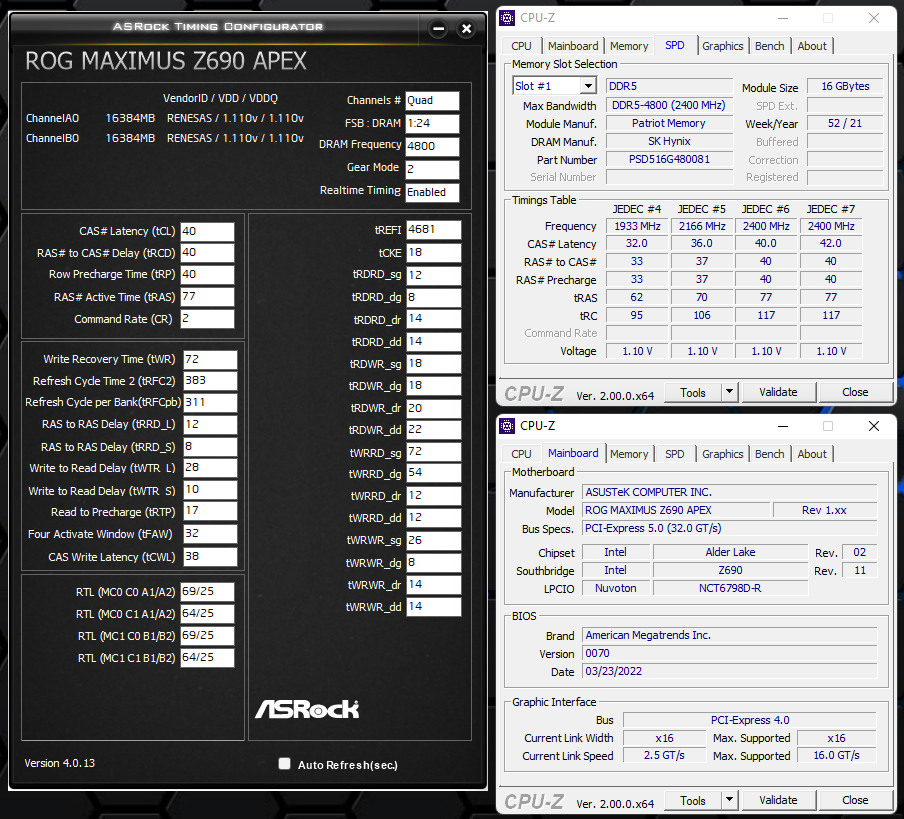
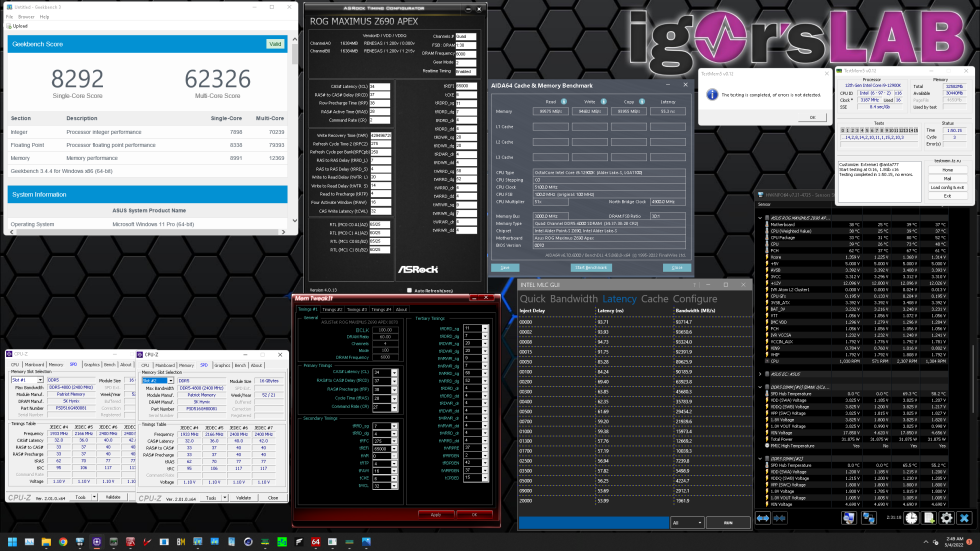
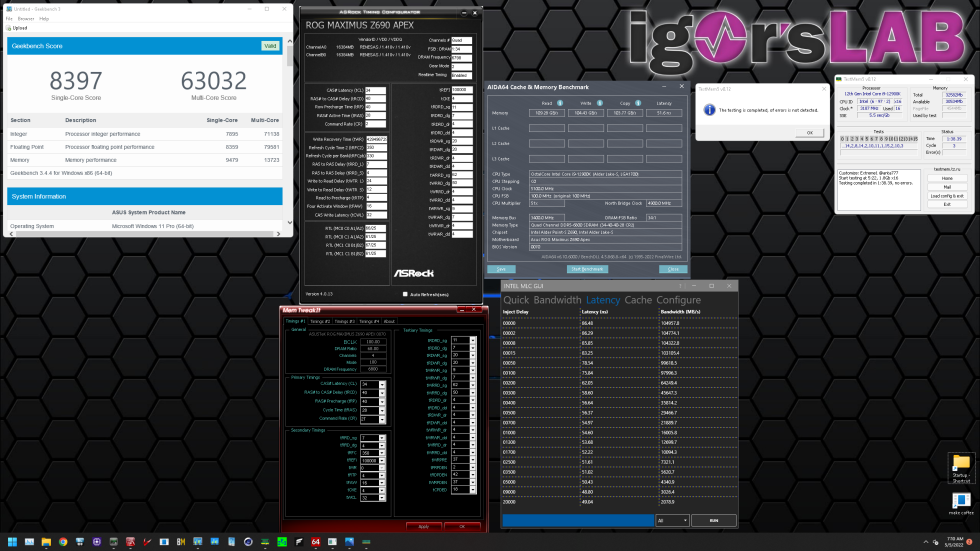
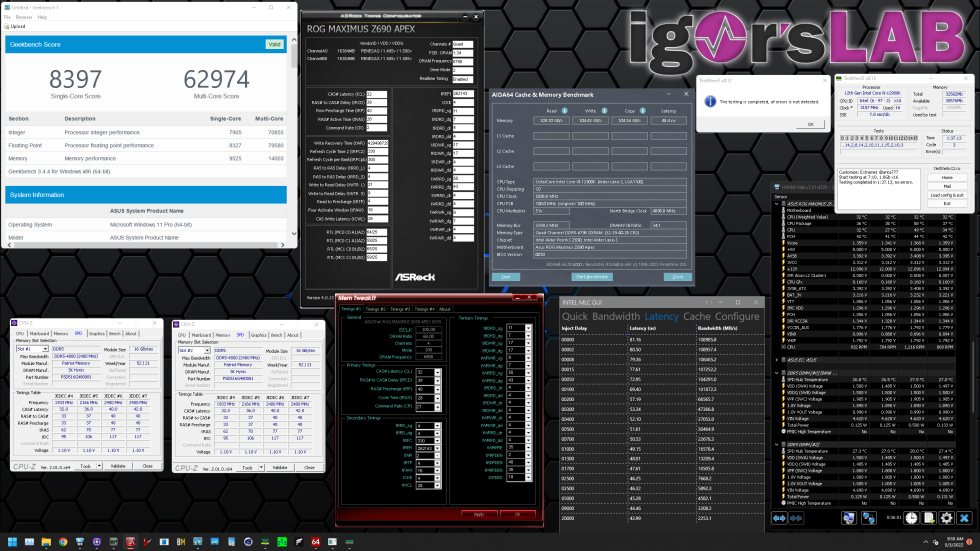
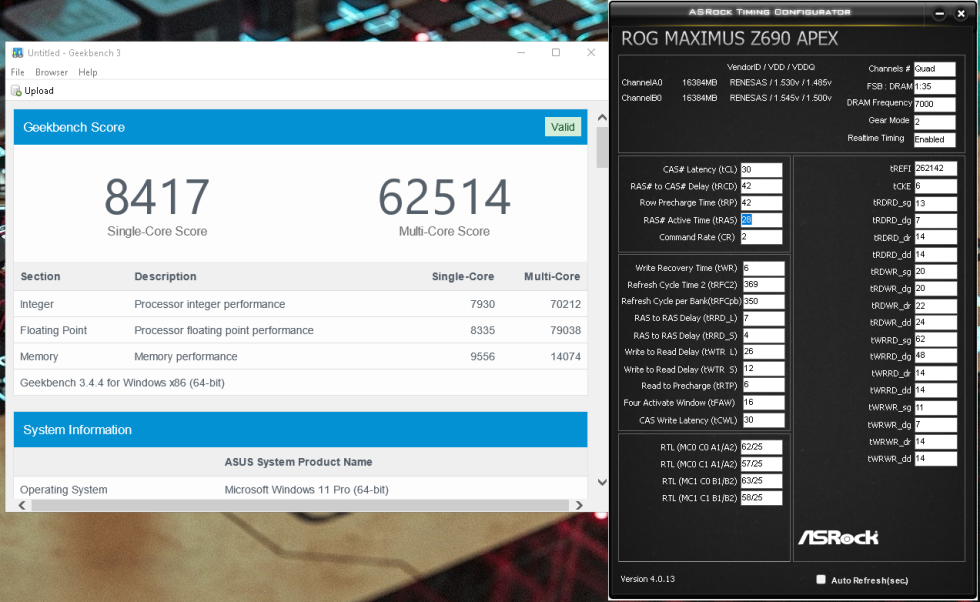


















5 Antworten
Kommentar
Lade neue Kommentare
Urgestein
Urgestein
Neuling
Veteran
Mitglied
Alle Kommentare lesen unter igor´sLAB Community →